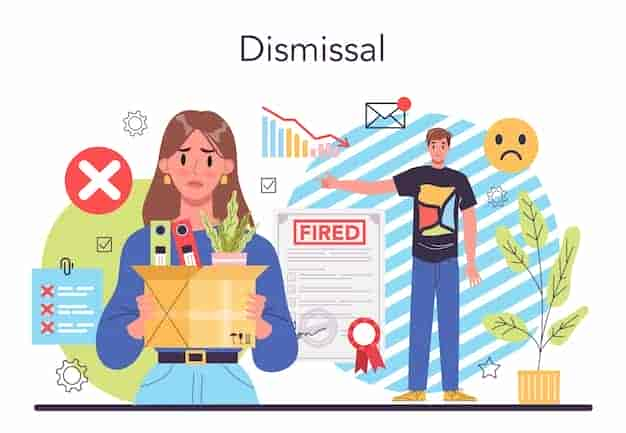Avoid These Market Segmentation Mistakes
Ellie Moore

Photo: Avoid These Market Segmentation Mistakes
Market segmentation is a cornerstone of successful marketing strategies. By dividing a broad audience into smaller, more specific groups based on demographics, behaviors, or needs, businesses can tailor their products and messaging to resonate with target customers. However, even seasoned marketers can make critical errors in this process, potentially undermining their efforts and wasting resources.
In this article, we will explore the most common market segmentation mistakes, their implications, and actionable solutions to avoid them. By understanding these pitfalls, you can refine your segmentation strategy, maximize ROI, and achieve sustainable growth.
Why Market Segmentation Matters
Market segmentation enables businesses to:
- Identify high-value customer groups.
- Create more effective marketing campaigns.
- Enhance customer satisfaction by meeting specific needs.
- Optimize resource allocation and reduce waste.
However, achieving these benefits requires a clear, strategic approach. Even minor missteps can lead to inaccurate targeting, reduced customer engagement, and lost revenue.
Common Market Segmentation Mistakes and How to Avoid Them
1. Overgeneralizing Target Groups
One of the biggest mistakes in market segmentation is grouping customers too broadly. While this may simplify marketing efforts, it often leads to ineffective campaigns that fail to address individual customer needs.
Why It’s a Problem:
Broad segments lack personalization, resulting in lower engagement and conversion rates. Customers expect tailored solutions, and a one-size-fits-all approach no longer suffices in today’s competitive landscape.
How to Avoid It:
- Use multiple criteria (e.g., demographics, psychographics, behaviors) to create detailed customer personas.
- Leverage data analytics tools to identify unique patterns and preferences within your audience.
- Regularly update your segmentation model to reflect changing market trends.
2. Ignoring Data-Driven Insights
Relying on assumptions or outdated information instead of hard data can derail your segmentation efforts.
Why It’s a Problem:
Without data, your segments are based on guesswork, which increases the risk of targeting the wrong audience. This can result in wasted marketing spend and missed opportunities.
How to Avoid It:
- Invest in data collection and analytics platforms.
- Conduct surveys, focus groups, and social media listening to gather real-time insights.
- Analyze past campaign performance to refine your segmentation.
Pro Tip: Tools like Google Analytics, HubSpot, and Tableau are excellent for gathering and analyzing customer data.
3. Neglecting Behavioral Segmentation
Focusing solely on demographics, such as age or location, can lead to incomplete audience profiles.
Why It’s a Problem:
Demographics alone don’t reveal customer motivations, purchasing behaviors, or preferences. Behavioral segmentation provides deeper insights into how customers interact with your brand.
How to Avoid It:
- Segment customers based on behaviors such as purchase history, website activity, and email engagement.
- Implement tracking technologies to monitor user actions across digital channels.
- Use this data to predict future behaviors and personalize marketing efforts.
4. Overcomplicating the Process
While under-segmentation is problematic, over-segmentation can be equally detrimental. Creating too many micro-segments may make your campaigns cumbersome and resource-intensive.
Why It’s a Problem:
Over-segmentation increases costs and complexity, often yielding diminishing returns. It can also confuse your team and dilute your brand message.
How to Avoid It:
- Strike a balance by focusing on high-impact segments.
- Test smaller campaigns before scaling them to broader audiences.
- Regularly evaluate the effectiveness of your segmentation to ensure it remains manageable.
5. Failing to Reassess and Adapt
Market conditions, consumer behaviors, and technological advancements are constantly evolving. Sticking to an outdated segmentation strategy can quickly render your efforts ineffective.
Why It’s a Problem:
Failing to adapt means missing out on emerging opportunities and being left behind by competitors.
How to Avoid It:
- Reassess your segmentation model at least quarterly.
- Stay informed about industry trends and shifts in consumer behavior.
- Use predictive analytics to anticipate future changes.
6. Overlooking Customer Feedback
Ignoring the voice of the customer (VoC) can lead to segmentation models that don’t align with actual needs or expectations.
Why It’s a Problem:
Customer feedback provides valuable qualitative data that complements quantitative insights. Without it, your segments may miss critical nuances.
How to Avoid It:
- Actively seek feedback through surveys, reviews, and social media.
- Incorporate customer opinions into your segmentation analysis.
- Use this feedback to validate or adjust your assumptions.
7. Inconsistent Messaging Across Segments
A fragmented marketing approach with inconsistent messaging can confuse your audience and weaken your brand.
Why It’s a Problem:
Customers value consistency. If your messaging varies drastically across segments, it may erode trust and hinder brand recognition.
How to Avoid It:
- Develop a core brand narrative that resonates across all segments.
- Customize your campaigns while ensuring they align with your brand identity.
- Use marketing automation tools to streamline communication and maintain consistency.
8. Ignoring Smaller but Profitable Segments
Many businesses focus solely on large customer segments, neglecting smaller niches that could yield higher profitability.
Why It’s a Problem:
Larger segments often have intense competition, whereas niche markets offer untapped potential and loyal customers.
How to Avoid It:
- Identify underserved markets or niche audiences within your industry.
- Create targeted campaigns to address their unique needs.
- Monitor performance to determine if these segments are worth scaling.
Key Takeaways for Effective Market Segmentation
To ensure your market segmentation efforts are successful:
- Leverage data: Use analytics and customer feedback to guide your strategy.
- Balance precision and simplicity: Avoid both overgeneralization and over-segmentation.
- Stay adaptive: Regularly update your approach to reflect evolving trends.
- Focus on consistency: Ensure your messaging aligns with your brand values.
Conclusion
Market segmentation is a powerful tool for businesses aiming to connect with their audience and drive growth. However, it’s not without its challenges. By avoiding common mistakes like overgeneralizing, ignoring data, or failing to adapt, you can create a robust segmentation strategy that delivers tangible results.
Success lies in a balanced, data-driven, and customer-centric approach. By continually refining your methods and embracing innovation, you can unlock the full potential of market segmentation and gain a competitive edge in your industry.
Finance & Investment
View All
October 23, 2025
Senate Finance Committee News 2025Unlock high rankings in 2025 with expert SEO content. Discover the E-E-A-T framework to build authority & trust. Your blueprint for success.
Ellie Moore

August 4, 2025
Contact Kia Finance Company FastMaster expert SEO content with E-E-A-T to dominate search rankings, build trust, and drive traffic. Your blueprint for 2025 success.
Ellie Moore

March 25, 2025
Robo-Advisors: Are They Worth It for New Investors?Discover the pros and cons of using robo-advisors for investing. Find out if automated advice is the right fit for your financial goals. Click to learn more!
Ellie Moore

December 3, 2024
The Ultimate Retirement ChecklistEnsure a stress-free retirement with our ultimate checklist! Cover all the essential steps, from financial planning to lifestyle choices. Start preparing for a fulfilling retirement today!
Ellie Moore

January 5, 2025
Top Finance Movies to WatchCraft expert SEO content that ranks high and genuinely helps your audience. Learn to leverage E-E-A-T, user intent, and comprehensive value.
Ellie Moore

March 22, 2025
Build Wealth with Diversification StrategiesLearn how to create a balanced investment portfolio with smart diversification strategies. Protect your investments and maximize returns!
Ellie Moore
Insurance
View AllUnderstand the differences between HMO, PPO, and EPO health insurance networks. Pick the plan that suits your needs best!
Ellie Moore
Maximize your car accident claim! Discover why top-rated lawyers are essential for navigating complex insurance, securing optimal compensation & justice.
Ellie Moore
Save on premiums with usage-based auto insurance. Learn how your driving habits shape coverage and costs!
Ellie Moore
Understand the legal side of insurance with this guide to policy exclusions. Learn what’s not covered and why it matters.
Ellie Moore
Switching insurance? Learn key considerations to find the best new provider while avoiding coverage gaps.
Ellie Moore
Discover how microinsurance provides affordable coverage solutions for underserved populations worldwide.
Ellie Moore
Education
View AllDiscover how portfolio-based assessments offer a better way to measure student progress. See how they foster creativity and critical thinking.
Read MoreExplore how virtual reality is revolutionizing learning by providing immersive educational experiences. Ready to see VR in action?
Read MoreShould smartphones be allowed in classrooms? Explore the pros and cons of using smartphones in education and their impact on learning.
Read MoreExplore the ongoing debate on standardized testing. Learn its pros, cons, and whether it should remain a key part of education.
Read MoreEthics in education is vital for balanced learning. Learn how to teach morality alongside knowledge transfer in today’s classrooms.
Read MoreMultilingual education promotes diversity and cultural understanding. Learn why it matters and how it benefits students in a globalized world.
Read MorePopular Post 🔥
View All
1
2
3
4
5
6
7
8
9
10
Health






Automotive
View All
August 20, 2025
B&D Automotive Repair Done Right The First Time
B&D Automotive: Get repairs done right the first time! Save money, ensure lasting vehicle health, and gain peace of mind on the road.

July 18, 2025
Lee's Automotive Customer Experiences And Reviews
Need trusted auto repair? Explore Lee's Automotive's consistent 5-star reviews. Learn how their transparency & honest service build customer trust.

July 18, 2025
Magnetic Automotive Accessories For Your Vehicle
Transform your car with magnetic accessories! Enjoy effortless convenience, versatility & sleek design for phone mounts, organization & more. Simplify your driv...

February 10, 2025
DIY Paint & Bodywork: Tips for a Flawless Finish
Learn what you need to know about DIY paint and bodywork. Get essential tips for achieving a professional-grade finish on your car at home!

August 3, 2025
Automotive Seam Sealer Tape Preparation Tips
Unlock automotive longevity! Learn essential seam sealer tape prep tips to prevent rust & ensure lasting vehicle protection.

February 3, 2025
Car Maintenance Basics: Oil Changes & More
New to car maintenance? This beginner’s guide covers oil changes, filter replacements, and essential care tips to keep your car running smoothly.

















